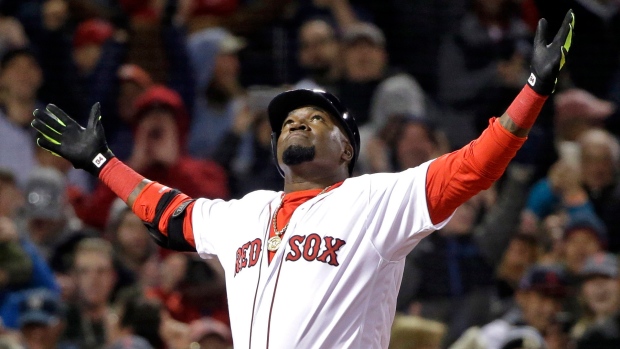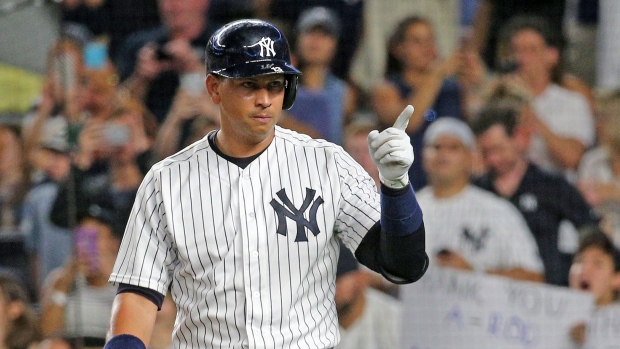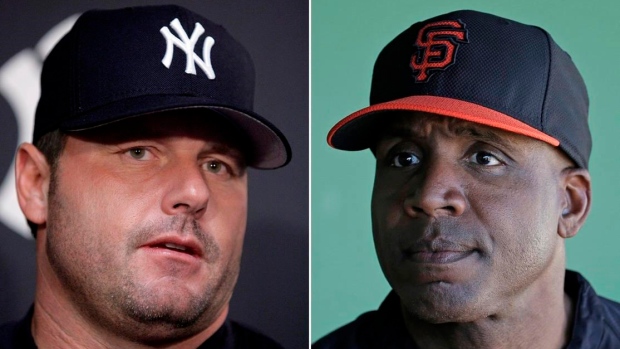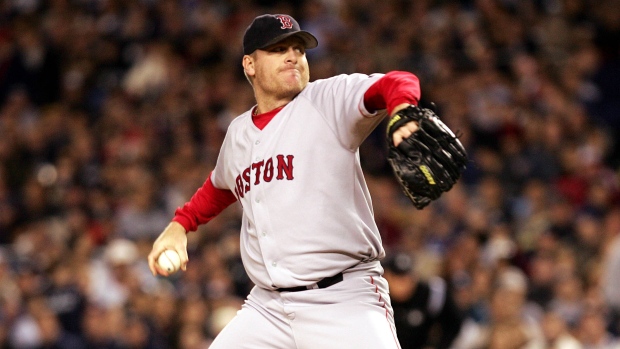Nov 22, 2021
Old debates take centre stage on latest Baseball Hall of Fame ballot
With the official Baseball Hall of Fame ballot out and voting conducted by the Baseball Writers Association of America underway, here is a look at the complex cases of each of this year’s leading candidates.
“Voting shall be based upon the player’s record, playing ability, integrity, sportsmanship, character, and contributions to the team(s) on which the player played.”
That’s how the Baseball Hall of Fame defines its voting process.
But as we’ve become more and more familiar with in recent years, there’s still a disparity among how voters perceive the criteria regarding performance enhancing drugs.
It will be front and centre this winter, possibly more than ever.
With the official ballot out and voting underway, here is a look at the complex cases of each of this year’s leading candidates.
David Ortiz

In the winter of 2002, David Ortiz was at a crossroads.
Ortiz put up decent numbers in limited playing time with the Minnesota Twins throughout the first six seasons of his career, but what he did well wasn’t exactly hard to replace. It was the height of the steroid era and Ortiz didn’t really play the field, so even after hitting 20 home runs and slashing .272/.339/.500, he was non-tendered.
As former Twins outfielder and five-time All-Star Torii Hunter put it in 2013, it was the “worst mistake” general manager Terry Ryan ever made.
Ortiz signed with the Red Sox on a modest one-year, $1.25 million deal and went on to become one of the most beloved figures in the long history of Boston sports, checking off pretty much every box a player can on the way to Cooperstown.
Ortiz was at the heart of the curse-breaking postseason run of 2004. And the additional World Series titles in 2007 and 2013. There was the franchise-record 54-homer season in 2006. The famous pre-game speech at Fenway Park five days after the Boston Marathon bombing in 2013. Not to mention the 10 All-Star selections, Home Run Derby title and 541 home runs – 483 of which came with the BoSox.
Sure, Ortiz spent most of his career as a designated hitter, but Edgar Martinez – also a DH – was elected to the Hall in 2019. And many of Ortiz’s career numbers top Martinez’s.
But there was also the Mitchell Report. Like many others in the voting class of 2022, Ortiz is one of the 104 names to show a positive test as part of what was intended to be an anonymous screening process in 2003. While he never failed a PED test during MLB’s official testing, which came in the year after, no player who was named in the document has made the Hall of Fame.
Might Ortiz be the first? Commissioner Rob Manfred called into question the legitimacy of Ortiz’s 2003 positive test in 2016 and said it should not tarnish an otherwise glistening legacy. Whether or not voters listen is another story.
Alex Rodriguez

In some ways, Alex Rodriguez is like Ortiz. And in other ways, not so much.
PEDs notwithstanding, whatever thin case there is to be made against Ortiz’s Cooperstown candidacy, a case against Rodriguez does not exist.
A-Rod has one of the most complete on-field legacies baseball has ever seen. He came up as a speedy shortstop and led the league in batting average (.358) in his first full season. He left the Mariners for the Rangers after signing one of sports’ first modern megadeals and tallied back-to-back 50-plus home run seasons in 2001 and 2002. He won his first AL MVP Award the season after and was traded to the Yankees where he would spend 12 seasons, winning two more MVPs. All in all, Rodriguez has – deep breath – 14 All-Star selections, three MVPs, two Gold Gloves, 10 Silver Sluggers and 696 home runs, good for fourth all-time.
The one knock on A-Rod – especially in his early days as a Yankee – was his performance in the playoffs, but he put that to bed in 2009 when he hit six home runs, drove in 18 and reached base safely 34 times in 15 games as the Yankees took home their first World Series title since 2000.
Still, like Ortiz, Rodriguez’s name was in the Mitchell Report and shortly after the New York Times published their story, he admitted to use of a banned substance from 2001 to 2003, saying he felt an “enormous amount of pressure” to justify his $252 million contract.
But there was more.
In January of 2013, the Miami New Times reported that an anti-aging clinic in Coral Gables, Fla., was supplying PEDs to some of baseball’s biggest stars, Rodriguez among them.
A few months later, MLB handed suspensions of 50 games or longer to 13 different players, headlined by Rodriguez’s historic 211-game ban that was set to knock him out for the rest of that season and all of 2014. The Yankees star appealed the penalty and was allowed to finish 2013 but missed all of 2014, essentially ending any chance he had at reaching Barry Bonds’ home run record of 762.
After retiring in 2016, Rodriguez transitioned to media, which some considered ironic due to his shaky relationship with reporters in the past. But A-Rod’s time in the broadcast booth has shown another side of him, particularly a sense of humour and humility that wasn’t always evident during his playing days. He also been on Shark Tank, in multiple Super Bowl commercials and is set to take over the controlling interest of the Minnesota Timberwolves and Minnesota Lynx in 2023 alongside e-commerce mogul Marc Lore.
So, what does all that have to do with getting into Cooperstown? Well, nothing.
But it could help with reputation and reputation could help with a few extra percentage points on the ballot.
Roger Clemens, Barry Bonds

We’ve been over this for nine straight winters. Without question, Roger Clemens and Barry Bonds are good enough to be in the Hall of Fame.
Clemens has seven Cy Youngs, two pitching triple crowns, an MVP, two World Series titles and 11 All-Star selections. Bonds is the game’s home run champion, a seven-time MVP, 14-time All-Star, eight-time Gold Glove Award winner and 12-time Silver Slugger.
But their Hall of Fame candidacy isn’t about their achievements. Perhaps no two players are more synonymous with PEDs, and both have already used nine of their 10 years of eligibility on the BBWAA ballot.
Bonds and Clemens have seen minor increases of support in each of the past several years, but it hasn’t been near enough. Three Januarys ago, Clemens sat at 59.5 per cent and Bonds at 59.1. In 2020, we saw them move – or more accurately, crawl – to 61.0 and 60.7, respectively. Last winter, Clemens ended at 61.6 per cent and Bonds at 61.8.
With only one chance remaining, it seems unlikely they’d each find an extra 14 per cent in one winter when it’s taken them three years to find two per cent. But then again, it is their grand finale, and that seems to count for something.
Take Canadian Larry Walker for example. He closed out his ninth year of BBWAA eligibility at 54.6 per cent and then shot up 22 percentage points to sneak in at 76.6 in his 10th year. But that was Walker, whose main counterargument was air pressure at Coors Field. That’s a lot different from once having to answer questions about PED use in front of a grand jury.
While there surely isn’t a debate to be had about either’s greatness, the debate on how to perceive it carries on.
Curt Schilling

Also in his 10th and final year of BBWAA eligibility is right-hander Curt Schilling, whose case for Cooperstown needs to be examined beyond the first and third-base lines.
Over 20 big-league seasons, he compiled a record of 216-146, a 3.46 ERA, led the league in wins twice, was elected to six All-Star Teams, won three World Series titles, and was named World Series MVP in 2001 after allowing a total of four earned runs in three separate starts. Schilling also owns a career bWAR of 79.5, which is higher than Brooks Robinson, Derek Jeter, Tony Gwynn, and John Smoltz, all of whom are in the Hall of Fame.
But then there’s the other side of Schilling, the side that has pushed fans away in recent years with inflammatory political commentary. Schilling was first suspended from his job at ESPN for an anti-Muslim tweet and later fired for transphobic comments made on Facebook. He also defended the storming of the U.S. Capitol on Twitter on Jan. 6.
Schilling rocketed from 60.9 per cent on ballots in 2019 to 70.0 per cent in 2020 but went up to just 71.1 last year. Still, being that close, the math on a final-year bump would indicate induction for most candidates. But Schilling is different, more so than any other candidate this year.
New committees could mean more inductees
In addition to the conventional BBWAA ballot, there will be two Era Committee ballots, formerly called the Veteran’s Committee with the Early Era ballot and the Golden Days ballot.
The Early Era division looks at candidates whose main contributions to baseball came before 1950 and features 10 figures – Buck O’Neil, John Donaldson, Bud Fowler, Bill Dahlen, Vic Harris, Grant “Home Run” Johnson, Lefty O’Doul, Dick “Cannonball” Redding, Allie Reynolds, and George “Tubby” Scales.
O’Neil played 10 seasons in the Negro League, spending nine with the iconic Kansas City Monarchs. After his playing career, O’Neil worked as a scout with the Chicago Cubs and signed future Hall of Famer Lou Brock to his first pro contract. He also helped establish the Negro League Baseball Museum in Kansas City and served as board chairman.
The Golden Days ballot includes candidates whose primary contributions came between 1950 and 1969.
It features Minnie Minoso, Tony Oliva, Maury Wills, Jim Kaat, Dick Allen, Ken Boyer, Gil Hodges, Roger Maris, Danny Murtaugh and Billy Pierce.
Results for Era Committee ballots will be revealed on Dec. 5 at 6 p.m. ET on MLB Network.

